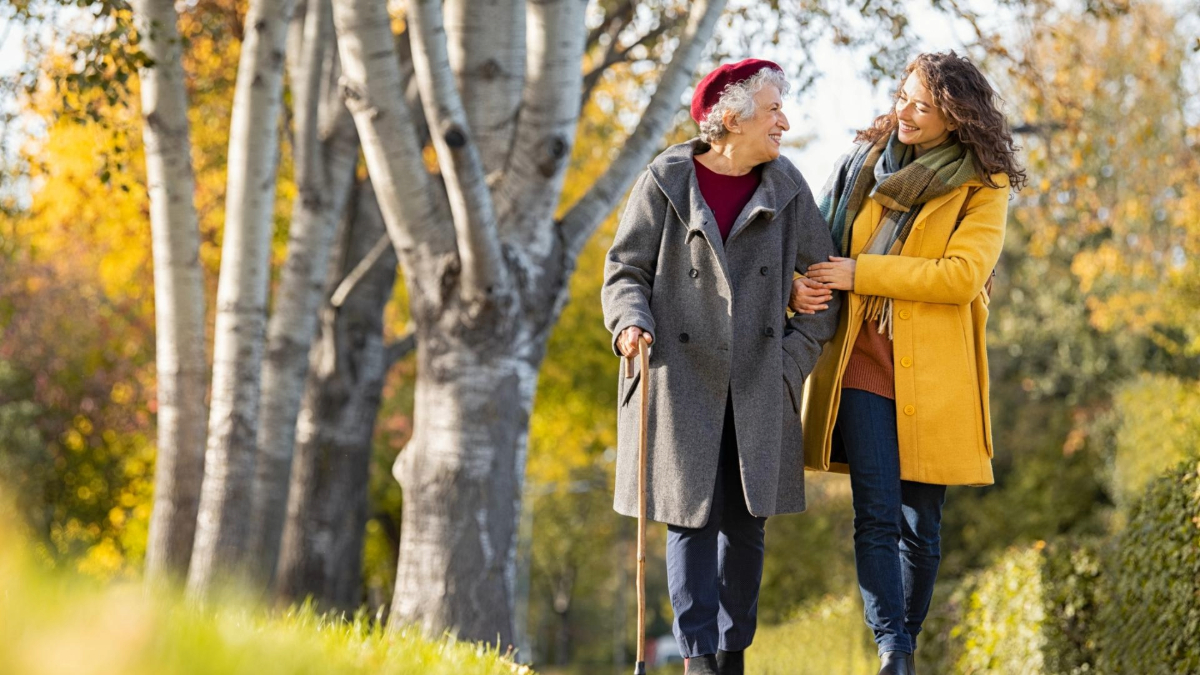Tips for Moving Through the World with Low Vision
Ranjoo Prasad, OD, offers advice on how to live your best life with low vision
Written By: BrightFocus Editorial Staff



Ranjoo Prasad, OD, offers advice on how to live your best life with low vision
Written By: BrightFocus Editorial Staff

Blindness or low vision affect 3.3 million Americans age 40 and over and more than 733 million people worldwide. Ranjoo Prasad, OD, a staff optometrist at the Philadelphia VA Medical Center who specializes in low vision rehabilitation, shares tools and resources for navigating life with low vision.
There are many ways to define low vision, but Dr. Prasad describes it as “when an individual has an eye condition that affects their vision and can’t be corrected further by medical, surgical, or optical means.” As a result, performing daily tasks can become difficult without the right assistance.
While low vision impacts a person’s daily function, the term “legally blind”—which was determined by the government—refers to the visual acuity or visual field (side vision) limitations that qualify someone for disability benefits. “Someone who is legally blind has low vision, but someone who has low vision may not necessarily be legally blind,” Dr. Prasad said.
Low vision specialists are eye doctors—usually optometrists— who are specialty trained to evaluate and prescribe special devices such as glasses or magnifiers. They can also make referrals to other services and specialists. You can find a low vision specialist by contacting your eye doctor or by reaching out to a division of senior services or state or local agencies, Dr. Prasad said.
Most vision evaluations are reimbursable by private insurers and Medicare, as are occupational therapists who help train individuals with their daily tasks who have low vision, she added.
There are many resources available to help with optimizing lighting and reading text on phones, maps, and computers. Dr. Prasad shared a few key tips, including:
Dr. Prasad also recommends patients ask their optometrist for adaptations to help them stay involved in their specific, beloved hobbies, and for referrals to specialists with expertise in the specific tools and technology available for various hobbies. “It all depends on [your] level of vision and what you want to do,” she said.
Navigating social circumstances with low vision can also be tricky. Individuals experiencing vision loss often feel anxious when explaining their vision to others. “I try to reassure [my patients] to just state the facts of what they’re experiencing,” she said. One of her patients, she said, wears a pin that says, “I have low vision”, which has started conversations to help others understand what that person was experiencing.
Visual impairment and loss can increase one’s risk for isolation, depression, and anxiety. To combat this, “Join activities,” Dr. Prasad said, “and be social within organizations if that’s meaningful for you. There [are also many] low vision support groups within the communities.” Connecting with others with low vision can clarify a lot, she said.
“But the most important thing,” she said, “is to know that you’re not alone. Be patient and compassionate with yourself.”
Listen to the full conversation with Dr. Prasad.
BrightFocus Chats are monthly in-depth conversations with expert scientists and clinicians about new treatments and discoveries around ending diseases of mind and sight. Learn more.
BrightFocus Foundation is a premier global nonprofit funder of research to defeat Alzheimer’s, macular degeneration, and glaucoma. Through its flagship research programs — Alzheimer’s Disease Research, Macular Degeneration Research, and National Glaucoma Research— the Foundation has awarded nearly $300 million in groundbreaking research funding over the past 51 years and shares the latest research findings, expert information, and resources to empower the millions impacted by these devastating diseases. Learn more at brightfocus.org.
Disclaimer: The information provided here is a public service of BrightFocus Foundation and is not intended to constitute medical advice. Please consult your physician for personalized medical, dietary, and/or exercise advice. Any medications or supplements should only be taken under medical supervision. BrightFocus Foundation does not endorse any medical products or therapies.
